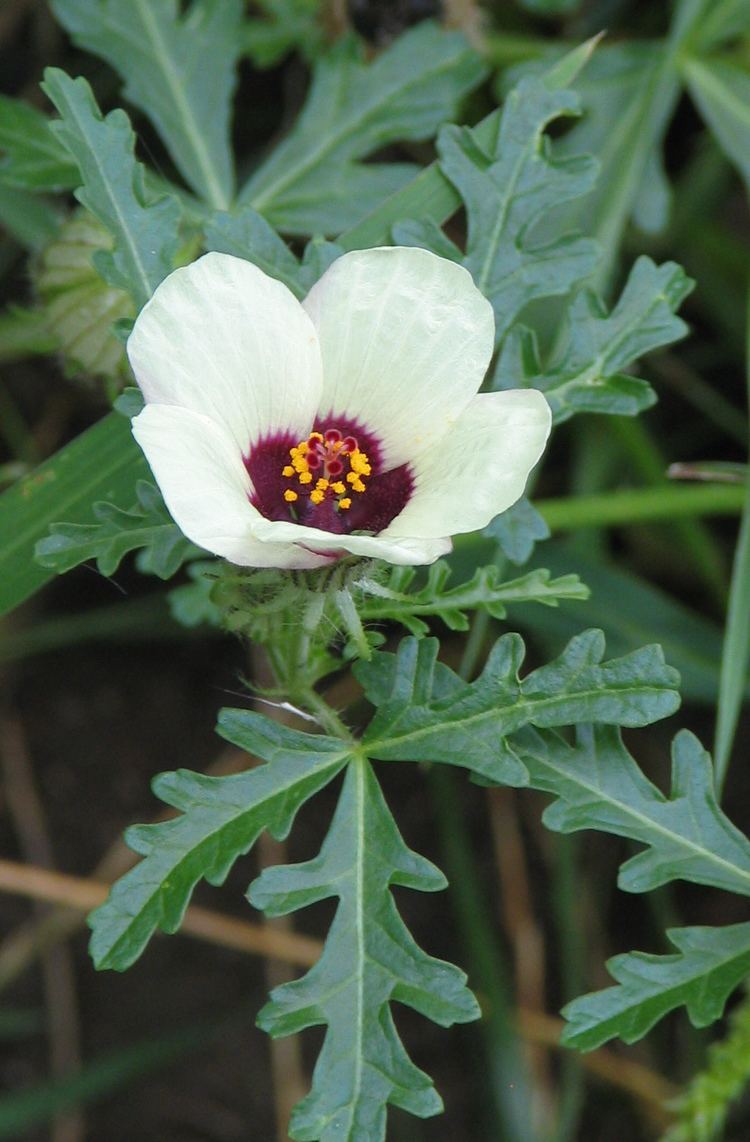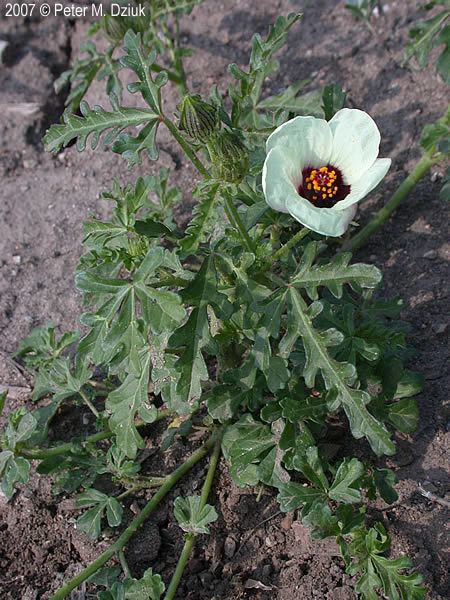Rank Species | Genus Hibiscus Higher classification Hibiscus | |
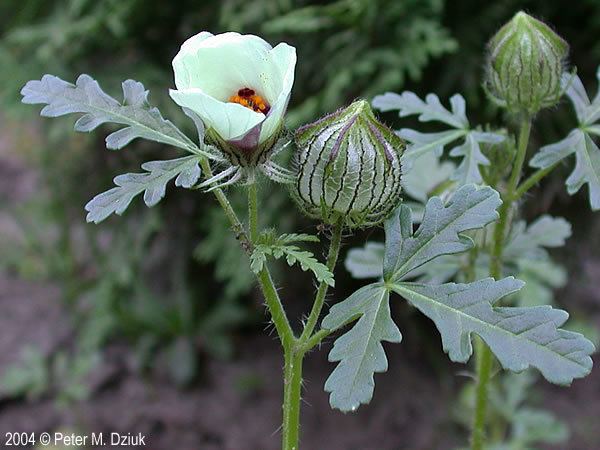 | ||
Similar Hibiscus, Mallows, Abutilon theophrasti, Arna bipunctapex, Amaranthus retroflexus | ||
Hibiscus trionum, commonly called flower-of-an-hour, bladder hibiscus, bladder ketmia, bladder weed, flower-of-the-hour, modesty, puarangi, shoofly, and venice mallow, is an annual plant native to the Levant. It has spread throughout southern Europe both as a weed and cultivated as a garden plant. It has been introduced to the United States as an ornamental where it has become naturalized as a weed of cropland and vacant land, particularly on disturbed ground.
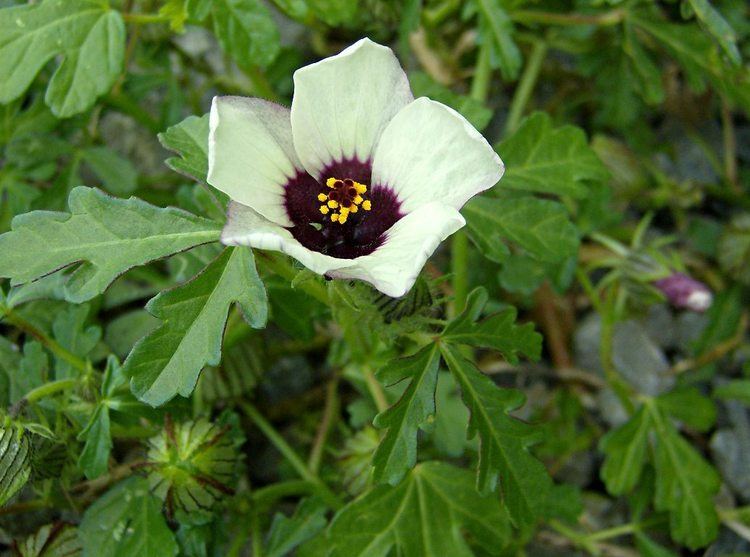
The plant grows to a height of 20–50 centimetres (7.9–19.7 in), sometimes exceeding 80 centimetres (31 in), and has white or yellow flowers with a purple centre. In the deeply pigmented centre of the flower, the surface features striations, which were previously considered to act as a diffraction grating, creating iridescence. Because of the irregularities of the plant cells and surface, the periodicity of the striations is however too irregular to create clear iridescence and thus the iridescence is not visible to man and flower visiting insects. The visual signal of the flower's of H. trionum to flower visiting insects is thus determined by the white and red pigmentary coloration. The pollinated but unripe seedpods look like oriental paper lanterns, less than an inch across, pale green with purple highlights.
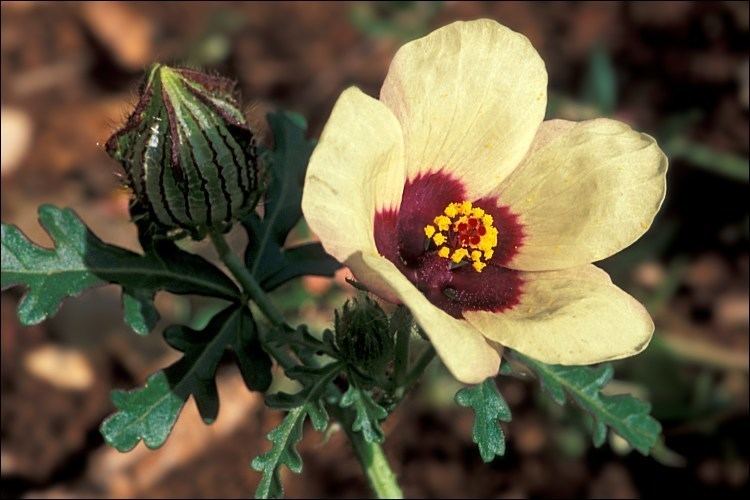
The flowers of the Hibiscus trionum can set seed via both outcrossing and self-pollination. During the first few hours after anthesis, the style and stigma are erect and receptive to receive pollen from other plants. In the absence of pollen donation, the style bends and makes contact with the anthers of the same flower, inducing self-pollination. Although outcrossing plants seem to perform better than self-pollinating plants, this form of reproductive assurance might have contributed to the success of H. trionum plants in several environments.
